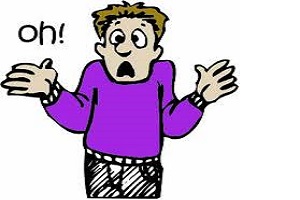کاربرد کلمه ی many در زبان انگلیسی .... این مجموعه ی کامل آموزشی شامل مباحث دستور زبان، واژگان، تلفظ، مکالمه، نگارش، خواندن، آموزش اصطلاحات و ضرب المثل، ارائه ی آزمون های طبقه بندی شده و هدف دار در پایان هر مبحث درسی با استفاده از شیوه های مدرن و جذاب می باشد. مطالب ارائه شده در این مجموعه برای سطوح مختلف آموزشی از سطح مقدماتی تا پیشرفته طراحی و پیش بینی شده است.
درس دهم
نکته دستوری: کلمه many به معنی(تعداد زیادی) همیشه قبل از اسمی به کار می رود که آن اسم قابل شمارش بوده و در حالت جمع باشد. مثال:
There are manystudents in the classroom.
در کلاس درس تعداد زیادی دانش آموز هست.
روی میز یک کتاب هست.
آیا روی میز یک کتاب هست؟
بله، هست.
آیا روی دیوار یک تخته سیاه وجود دارد؟
بله هست (وجود دارد).
آیا یک صندلی در تصویر هست؟
بله، هست.
آیا در کلاس یک دختر هست؟
خیر، نیست.
آیا دانش آموزان زیادی در کلاس هستند؟
بله هستند.
آیا معلم های زیادی در تصویر هست؟
خیر نیست.
آیا در کلاس نیمکت ها و میزهای تحریر زیادی وجود دارد؟
بله وجود دارد.
1- There is a book on the table.
2- Is there a book on the table?
Yes, there is.
3- Is there a blackboard on the wall?
Yes, there is.
4- Is there a chair in the picture?
Yes, there is.
5- Is there a girl in the classroom?
No, there isn’t
6- Are there many students in the classroom?
Yes, there are.
7- Are there many teachers in the picture?
No, there aren’t.
8-Are there many benches and desks in the classroom?
Yes, there are.
تمرینات درس دهم
الف- به شکل منفی تبدیل کنید:
A-change into the negative:
Example:
There is an egg on the table.
There isn’t an egg on the table.
1- There is an apple in the picture.
There isn’t an apple in the picture.
2- There are many benches in the classroom.
There aren’t many benches in the classroom.
3- There is a woman in the picture.
There isn’t a woman in the picture.
4- There are many books under the desk.
There aren’t many books under the desk.
5- There is a picture on the wall.
There isn’t a picture on the wall.
منبع:سلام زبان




